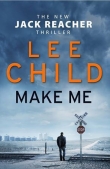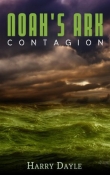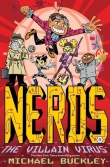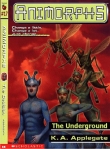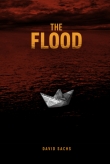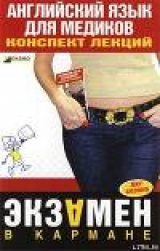
Текст книги "Английский язык для медиков: конспект лекций"
Автор книги: Елена Беликова
Жанры:
Языкознание
,сообщить о нарушении
Текущая страница: 3 (всего у книги 12 страниц)
ЛЕКЦИЯ № 8. Muskular system
Skeletal (voluntary) system.
The dermomyotome further differentiates into the myotome and the dermatome.
Cells of the myotome migrate ventrally to surround the intraembry-onic coelom and the somatic mesoderm of the ventrolateral body wall. These myoblasts elongate, become spindle-shaped, and fuse to form multinucleated muscle fibers.
Myofibrils appear in the cytoplasm, and, by the third month, cross-striations appear. Individual muscle fibers increase in diameter as myofibrils multiply and become arranged in groups surrounded by mesenchyme.
Individual muscles form, as well as tendons that connect muscle to bone.
Trunk musculature: By the end of the fifth week, body-wall musculature divides into a dorsal epimere, supplied by the dorsal primary ramus of the spinal nerve, and a ventral hypomere, supplied by the ventral primary ramus.
Epimere muscles form the extensor muscles of the vertebral column, and hypomere muscles give rise to lateral and ven tral flexor musculature.
The hypomere splits into three layers. In the thorax, the three layers form the external costal, internal intercostal, and transverse thoracic muscle.
In the abdomen, the three layers form the external oblique, internal oblique, and transverse abdomii muscles. Head musculature.
The extrinsic and intrinsic muscles of the tongue are thought to be derived from occipital myotomes that migrate forward.
The extrinsic muscles of the eye may derive from preoptic myoto-mes that originally surround the prochordal plate.
The muscles of mastication, facial expression, the pharynx, and the larynx are derived from different pharyngeal arches and maintain their innervation by the nerve of the arch of origin.
Limb musculature originates in the seventh week from soma meso-derm that migrates into the limb bud. With time, the limb musculature splits into ventral flexor and dorsal extern groups.
The limb is innervated by spinal nerves, which penetrate the limb bud mesodermal condensations. Segmental branches of the spinal nerves fuse to form large dorsal a ventral nerves.
The cutaneous innervation of the limbs is also derived from spinal nerves and reflects the level at which the limbs arise.
Smooth muscle: the smooth muscle coats of the gut, trachtea, bronchi, and blood vessels of the associated mesenteries are derived from splanchnic mesoderm surrounding the gastrointestinal tract. Vessels elsewhere in the body obtain their coat from local mesenchyme.
Cardiac muscle, like smooth muscle, is derived from splanchnic mesoderm.
New words
migrate – мигрировать
ventral – брюшной
to surround – окружать
somatic – соматический
cytoplasm – цитоплазма
spindle-shaped – веретенообразный
to fuse – плавить
cross-striations – поперечные бороздчатости
to appear – появляться
extensor – разгибающая мышца
dorsal – спинной
primary – первичный
ramus – ветвь
split – раскол
extrinsic – внешний
intrinsic – внутренний
vertebral – позвоночный
arche – дуга
abdomen – живот
facial – лицевой
expression – выражение
to penetrate – проникать
segmental – сегментальный
branch – ветвь
Запомните следующие застывшие словосочетания.
In the middle
In the corner
To the right
To the left
Вставьте артикль, где необходимо.
1. There is… thick red… carpet in my… room… carpet is on… floor in… front of… sofa
2. Where is… table? – His… table is near… window.
3. I can see… fine… vase on… shelf. Is it your… vase?
4. We have no… piano in our… living-room.
5. My… uncle is… married. He has… beautiful wife. They have… son, but they have no… daughter.
6. I can see… nice… coffee-table in… middle of… room to… right of… door. It is. black and. red. I like… coffee-table.
7. Our… TV-set is on… little… table in… corner of… room.
8. There is… beautiful picture in my father's… study… picture is on… wall to… left of… window.
9. My aunt's flat is in. new house.
10. There is… living-room,… bedroom,… study,… bathroom and… kitchen in… flat.
11… bedroom is… large room with… two windows.
12… room is light as… windows are large.
13. There are… white curtains on.windows.
14. There are… two beds with. large pillows on them.
15. There are… small tables near… beds.
16. There are… lamps on them. To the left of… door there is… dressing-table with. looking – glass on it.
17. There is… low chair at the dressing – table.
18. There are… several pictures on… pale green walls.
19. There is… thick carpet on… floor.
20… carpet is dark green… room is very cosy.
Answer the questions.
1. What does the muscular system consist of?
2. What surround the intraembryonic coelom?
3. What form do myoblasts become?
4. Where myofibrils appear?
5. By what week body-wall musculature are divided?
6. What is the limb innervated by?
7. What does trunk musculature consist of?
8. Where is the cutaneous innervation of the limbs derived from?
9. Where is cardiac muscle derived from?
10. What do smooth muscles coat?
Make the sentences of your own using the new words (10 sentences).
Find the definite and indefinite articles in the text.
Find one word, which is a little bit different in meaning from others (найдите одно слово, которое немного отличается от других по смыслу):
1) a) abdomen; b) back; c) belly;
2) a) last; b) primary; c) first;
3) a) facial; b) lateral; c) appearance;
4) a) textbook; b) backbone; c) vertebral;
5) a) dark; b) night; c) day.
ЛЕКЦИЯ № 9. Skeleton
The bones of our body make up a skeleton. The skeleton forms about 18% of the weight of the human body.
The skeleton of the trunk mainly consists of spinal column made of a number of bony segments called vertebrae to which the head, the thoracic cavity and the pelvic bones are connected. The spinal column consists of 26 spinal column bones.
The human vertebrae are divided into differentiated groups. The seven most superior of them are the vertebrae called the cervical vertebrae. The first cervical vertebra is the atlas. The second vertebra is called the axis.
Inferior to the cervical vertebrae are twelve thoracic vertebrae. There is one rib connected to each thoracic vertebrae, making 12 pairs of ribs. Most of the rib pairs come together ventrally and join a flat bone called the sternum.
The first pairs or ribs are short. All seven pairs join the sternum directly and are sometimes called the «true ribs». Pairs 8, 9, 10 are «fal-se ribs». The eleventh and twelfth pairs of ribs are the «floating ribs».
Inferior to the thoracic vertebrae are five lumbar vertebrae. The lumbar vertebrae are the largest and the heaviest of the spinal column. Inferior to the lumbar vertebrae are five sacral vertebrae forming a strong bone in adults. The most inferior group of vertebrae are four small vertebrae forming together the соссух.
The vertebral column is not made up of bone alone. It also has cartilages.
New words
skeleton – скелет
make up – составлять
weight – вес
trunk – туловище
mainly – главным образом
thoracic cavity – грудная впадина
axis – ось
spinal column – позвоночник
inferior – низший
rib – ребро
pair – пара
sacral – сакральный
соссух – копчик
floating – плавающий
forming – формирующий
cartilage – хрящ
Если после конструкции there is (there are) стоит неисчисляе-мое существительное во множественном числе, вместо опущенного неопределенного артикля часто (не обязательно) употребляется слово «some».
Вставьте артикль, где необходимо.
1. There is… sofa in… corner of… room.
2. There are… cushions on… sofa
3. There are… books on… shelf. Give me… book, please.
4. Look into… refrigerator. What can you see on… shelves?
5. There is… butter in… butter-dish.
6. There is. sausage, but there is no… cheese.
7. There are… eggs,… apples.
8. There is… orange,… lemon, and… some jam in… little vase.
9. There is juice in this… cup. May I drink… juice?
10. There are… girls in… yard, but I can see no… boys. Where are… boys?
11… boys are playing football at… stadium.
12. I have. colour TV-set… TV-set is on… little table in… corner of… room.
13. There is… book,… pen, and… paper on my… writing-desk.
14. My… brother is… teacher. He works at… school.
15. He has… very good books. His… books are in… big bookcase.
16. There is… tea in my… glass. There is no… tea in my… friend's… glass.
17. His… glass is empty.
18. Where is… coffee-table in your… room? -… coffee-table is in… front of… sofa
19. There is… cup on… coffee-table and… newspa pers.
20. There is. coffee in… cup.
Answer the questions.
1. What do the bones of our body make up?
2. How many per cents does the skeleton form?
3. What does the skeleton of the trunk mainly consist of?
4. How many bones does the spinal column consist of?
5. What groups are the human vertebrae divided into?
6. How many groups are the most superior?
7. How is the first cervical vertebra called?
8. Are the first pairs or ribs short?
9. How is the second vertebra called?
10. What forms the соссух?
Make the sentences of your own using the new words (10 sentences).
Find the definite and indefinite articles in the text.
ЛЕКЦИЯ № 10. Muscles
Muscles are the active part of the motor apparatus; their contraction produces various movements.
The muscles may be divided from a physiological standpoint into two classes: the voluntary muscles, which are under the control of the will, and the involuntary muscles, which are not.
All muscular tissues are controlled by the nervous system. The involuntary muscles are controlled by a specialized part of the nervous system.
When muscular tissue is examined under the microscope, it is seen to be made up of small, elongated threadlike cells, which arc called muscle fibres, and which are bound into bundles by connective tissue.
There are three varieties of muscle fibres:
1) striated muscle fibres, which occur in voluntary muscles;
2) unstriated muscles which bring about movements in the internal organs;
3) cardiac or heart fibres, which are striated like (1), but are otherwise different. Both unstriated and cardiac muscles are involuntary. All living cells can move to some degree, but this ability is highly developed in muscles. Muscle tissue comprises about 40% of human weight. Muscle consists of threads, or muscle fibers, supported by connective tissue, which act by fiber contraction: the fibers can shorten to two – thirds of their resting length. There are two types of muscles smooth and striated. Smooth, or «involuntary» muscles are found in the walls of all the hollow organs and tubes of the body, such as blood vessels and intestines. These react slowly to stimuli from the autono-mic nervous system. The striated, or «voluntary» muscles of the body mostly attach to the bones and move the skeleton. Under the microscope their fibres have a cross – striped appearance. Striated muscle is capable of fast contractions. The heart wall is made up of special type of striated muscle fibres called cardiac muscle. Muscles vary greatly in structure and function in different organs and animals: some invertebrates have only smooth muscles, while all the arthropods have only striated muscles. The body is composed of about 600 skeletal muscles. In the adult about 35-40% of the body weight is formed by the muscles. According to the basic part of the skeleton all the muscles are divided into the muscles of the trunk, head and extremities.
According to the form all the muscles are traditionally divided into three basic groups: long, short and wide muscles. Long muscles compose the free parts of the extremities. The wide muscles form the walls of the body cavities. Some short muscles, of which stapedus is the smallest muscle in the human body, form facial musculature.
Some muscles are called according to the structure of their fibres, for example radiated muscles; others according to their uses, for example extensors or according to their directions, for example, – oblique. The muscles are formed by a mass of muscle cells. The muscle fibres are connected together by connective tissue. There are many blood vessels and nerves in the muscles.
Great research work was carried out by many scientists to determine the functions of the muscles. Three basic methods of study were used: experimental work on animals, the study of the muscles on a living human body and on the cadavers. Their work helped to establish that the muscles were the active agents of motion and contraction.
New words
muscles – мышцы
active – активный
part – часть
motor apparatus – двигательный аппарат
various – различный
movement – движение
elongated – удлиненный
threadlike – нитевидный
to be bound – быть связанным
some – некоторый
degree – степень
this – этот
ability – возможность
capable – способность
scientist – ученый
basic – основной
experimental – экспериментальный
work – работа
Запомните застывшие словосочетания.
In the morning. In the evening to come home.
In the afternoon. At night to leave home for work (school).
To go to bed. to go to school at half past five.
To go to work, to go home at a quarter past five.
Вставьте артикль, где необходимо.
1. My… friend has to get up early in… morn ing because he goes to… school.
2. That's why he usually goes to… bed early in… evening.
3… weather was very bad in… morning yesterday.
4… sky was grey and it was raining.
5. But in… middle of… day… weather began to change.
6… rain stopped and… sun appeared from behind… clouds.
7. In… afternoon it was very warm.
8. I did not want to stay at… home and went into… yard.
9. There were… boys and… girls in… yard.
10. We played in… yard till late in… evening.
11. When I came… home, I drank… tea, ate… sandwich and went to… bed at once.
12. I slept very well at… night.
13. My brother is… pupil. He goes to… school. He goes to… school in… morning. He has five or six… lessons every day. In… afternoon he goes home. At… home he does his… homework.
14. In… evening he reads… books. He usually goes to… bed at… half past ten. At… night he sleeps.
15. My father goes to… work in… morning and comes… home in… evening.
16. I get up at… half past seven in… morning and go to… bed at… quater to eleven in… evening.
17. When does your mother leave… home for… work?
18. She leaves… home for… work at… quarter past eight.
19. When do you leave… home for… school?
20. I leave… home for… school at… half past… eight.
Answer the questions.
1. What are the muscles?
2. What contraction produces various movements?
3. What may the muscles be divided from?
4. What does the nervous system control?
5. What does the muscular tissue consist of?
6. How many varieties of muscle fibres are there?
7. How many per cents does muscle tissue comprise?
8. For how many groups are all the muscles traditionally divided?
9. How sometimes are muscles called?
10. What does connective tissue connect?
Make the sentences of your own using the new words (10 sentences).
Find the definite and indefinite articles in the text.
Find one word, which is a little bit different in meaning from others (найдите одно слово, которое немного отличается от других по смыслу):
1) a) work; b) job; c) rest;
2) a) class; b) student; c) sea;
3) a) home; b) house; c) garage;
4) a) lift; b) down; c) rise;
5) a) white; b) pink; c) scarlet.
ЛЕКЦИЯ № 11. Bones
Bone is the type of connective tissue that forms the body's supporting framework, the skeleton. In addition, bones act as levers for muscles and serve to protect the internal organs from injury. They always act as a storehouse for calcium and phosphorus. The bone marrow inside the bones is the body's major producer of both red and white blood cells.
Bones vary somewhat according to a person's age and sex. The bones of women are generally lighter than those of men, while children's bones are more resilient than those of adults and tend to bend rather than fracture when abnormal pressure is applied to them. Bones also respond to certain physical physiological changes. For example, bones tend to atrophy, or waste away, when muscular activity in a region is decreased, as when a limb is afflicted with a paralytic disease.
Bones are generally classified in two ways. When classified on the basis of their shape, they fall into four categories: flat bones, such as the ribs; long bones, such as the thigh bone; short bones, such as the wrist bones; and irregular bones, such as the vertebrae. When classified on the basis of how they develop, bones are divided into two groups: endochondral bones and intramembraneous bones. Endochon-dral bones, such as the long bones and the bones at the base of the skull, develop from cartilage tissue. Intramembraneous bones, such as the flat bones of the roof of the skull, are not formed from cartilage but develop under or within a connective tissue membrane. Although en-dochondral bones and intramembraneous bones form in different ways, they have the same structure.
The formation of bone tissue (ossification) begins early in embryo-logical development, when the embryo is two months old. The bones continue to grow during childhood and adolescence, reaching their full size when the person is about 25.
Most adult bone is composed of two types of tissue: an outer layer of compact bone and an inner layer of spongy bone. Compact bone is strong and dense. Spongy bone is light and porous and contains bone marrow. The amount of each type of tissue varies in different bones. The flat bones of the skull consist almost entirely of compact bone, with very little spongy tissue. In a long bone, such as the thigh bone, the shaft, called the diaphysis, is made up largely of compact bone. While the ends, called epyphyses, consist mostly of spongy bone. In a long bone, marrow is also present inside the shaft, in a cavity called the medullary cavity.
Surrounding every bone, except at the surface where it meets another bone, is a fibrous membrane called the periosteum. The outer layer of the periosteum consists of a network of densely packed collagen fibres and blood vessels. This layer serves for the attachment of tendons, ligaments, and muscles to the bone and is also important in bone repair.
The inner layer of the periosteum has many fibres, called fibres of Sharpey, which penetrate the bone tissue, anchoring the periosteum to the bone. The inner layer also has many bone-forming cells, or osteo-blasts, which are responsible for the bone's growth in diameter and the production of new bone tissue in cases of fracture, infection.
In addition to the periosteum, all bones have another membrane, the endosteum. It lines the marrow cavity as well as the smaller cavities within the bone. This membrane, like the inner layer of the periosteum, contains osteoblasts, and is important in the formation of new bone tissue.
Bone tissue consists largely of a hard substance called the matrix. Embedded in the matrix are the bone cells, or osteocytes. Bone matrix consists of both organic and inorganic materials. The organic portion is made up chiefly of collagen fibres. The inorganic portion of matrix constitutes about two thirds of a bone's total weight. The chief inorganic substance is calcium phosphate, which is responsible for the bone's hardness. If the calcium were removed from a bone, the bone would loose its rigidity and become flexible. If the organic portion were burned out, or calcined, the bone would retain its shape but crumble under the slightest pressure. In the formation of intramembraneous bone, certain cells of the embryonic connective tissue congregate in the area where the bone is to form. Small blood vessels soon invade the area, and the cells, which have clustered in strands, undergo certain changes to become osteoblasts. The cells then begin secreting collagen fibers and an intercellular substance. This substance, together with the collagen fibers and the connective tissue fibers already present, is called osteoid. Osteoid is very soft and flexible, but as mineral salts are deposited it becomes hard matrix. The formation of endochondral bone is preceded by the formation of a cartilaginous structure similar in shape to the resulting bone. In a long bone, ossification begins in the area that becomes the center of the shaft. In this area, cartilage cells become osteo-blasts and start forming bone tissue in the same manner as intramem-braneous bone is formed. This process spreads toward either end of the bone, but while this is happening the cartilage cells at each end also become osteoblasts and start forming bone. The only areas where cartilage is not soon replaced by bone tissue are the regions where the shaft joins the two epiphyses. These areas, called epiphyseal plares, are responsible for the bone's continuing growth in length, As the bone grows, each epiphyseal plate forms new cartilage, which is then replaced by bone. When the epiphyseal plates stop forming cartilage, the bone stops growing. The bone's growth in diameter is due to the addition of layers of bone around the outside of the shaft. As they are formed, layers of bone on the inside of the shaft are removed. Thus, when a long bone grows in diameter, the compact bone of the shaft does not get thicker, but the marrow cavity gets larger. In all bones, the matrix is arranged in layers called lamellae. In compact bone, the lamellae are arranged concentrically around blood vessels, and the space containing each blood vessel is called a Haversian canal. The osteocytes are located between the lamellae, and the canaliculi containing their cellular extensions connect with the Haversian canals, allowing the passage of nutrients and other materials between the cells and the blood vessels. Besides the blood vessels in the Haversian canals, bone tissue contains many smaller blood vessels that extend from the periosteum and enter the bone through small openings called canals of Volkmann. These vessels lead to those in the Haversian canals. In long bones there is an additional blood supply, the nutrient artery, which represents the chief blood supply to the marrow. The structure of spongy is similar to that of compact bone. However, there are fewer Haversian canals, and the lamellae are arranged in a less regular fashion, forming spicules and strands known as trabeculae.
New words
bone – кость
in addition – в дополнение
to serve – служить
to protect – защищать
internal – внешний
calcium – кальций
phosphorus – фосфор
inside – внутри
major – главный
red – красный
white – белый
blood cells – кровяные клетки
age – возраст
sex – пол
changes – перемены
to tend – иметь тенденцию
atrophy – атрофия
spongy – губчатый
outer – внешний
tendon – сухожилие
ligament – связка
responsible – ответственный, надежный
inner – внутренний
flexible – гибкий
periosteum – надкостница
osteoblast – остеобласт (клетка, образующая кость)
rigidity – неподвижность
to retain – удерживать, сохранять
shape – движение
but – но
to crumble – крошиться
to congregate – собираться
epiphyseal – относящийся к эпифизу
shaft – ствол, тело (длинной) кости, диафиз
spicules – выросты, отростки
strand – пучок
known as – известный как
Перед названиями месяцев и дней недели артикль не употребляется.
School begins in September.
We rest on Sunday.
Запомните следующие застывшие словосочетания.
After – work
After – school
From – work
From – school
Перед порядковыми числительными употребляется определенный артикль.
Our classroom is on the second floor.
Today is the tenth of May.
Вставьте артикль, где необходимо.
1. There are three rooms and. kitchen in our new flat.
2. My new dress is made of… silk.
3. If you want to write something on… blackboard, you must have… piece of… chalk.
4. Are there any pupils in… classroom?
5. I have… new English book… book is very interesting.
6. There is… garden in… front of our school… garden is not large, but it is very nice.
7… May is… fifth month of the year.
8… Saturday is… sixth day of the week.
9… Sunday is… day off.
10. My friends live in… small town. It is… new town.
11… streets in… town are broad and straight.
12. There are… beautiful buildings in them.
13… town is very green, and so… air is fresh.
14. There are… beautiful parks and gardens in… town.
15… people like to go there after… work.
16. In… evening you can hear… sounds of… music from… parks.
17. There are… schools,… libraries,… hospital,… theatre,… cinemas,… polyclinics and… kindergartens in… town.
18. This is… classroom… classroom is huge and light.
19. There is… picture on… wall.
20. What is… date today? It is… seventh of… December.
Answer the questions.
1. What do bones form?
2. How do bones act?
3. What is the body's major producer of both red and white blood cells?
4. What tendencies do bones have?
5. In how many ways are bones generally classified?
6. When does the formation of bone tissue begin?
7. Is compact bone strong or note?
8. What is called periosteum?
9. In what way does the bone loose its rigidity and become flexible?
10. Where are the osteocytes located?
Make the sentences of your own using the new words (10 sentences).
Find the definite and indefinite articles in the text.
